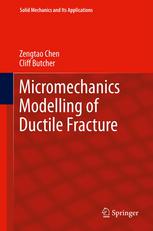

Most ebook files are in PDF format, so you can easily read them using various software such as Foxit Reader or directly on the Google Chrome browser.
Some ebook files are released by publishers in other formats such as .awz, .mobi, .epub, .fb2, etc. You may need to install specific software to read these formats on mobile/PC, such as Calibre.
Please read the tutorial at this link: https://ebookbell.com/faq
We offer FREE conversion to the popular formats you request; however, this may take some time. Therefore, right after payment, please email us, and we will try to provide the service as quickly as possible.
For some exceptional file formats or broken links (if any), please refrain from opening any disputes. Instead, email us first, and we will try to assist within a maximum of 6 hours.
EbookBell Team

0.0
0 reviewsThis book summarizes research advances in micromechanics modeling of ductile fractures made in the past two decades. The ultimate goal of this book is to reach manufacturing frontline designers and materials engineers by providing a user-oriented, theoretical background of micromechanics modeling. Accordingly, the book is organized in a unique way, first presenting a vigorous damage percolation model developed by the authors over the last ten years. This model overcomes almost all difficulties of the existing models and can be used to completely accommodate ductile damage developments within a single-measure microstructure frame. Related void damage criteria including nucleation, growth and coalescence are then discussed in detail: how they are improved, when and where they are used in the model, and how the model performs in comparison with the existing models. Sample forming simulations are provided to illustrate the model’s performance.